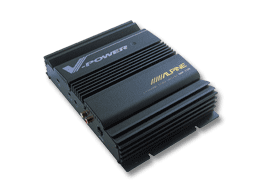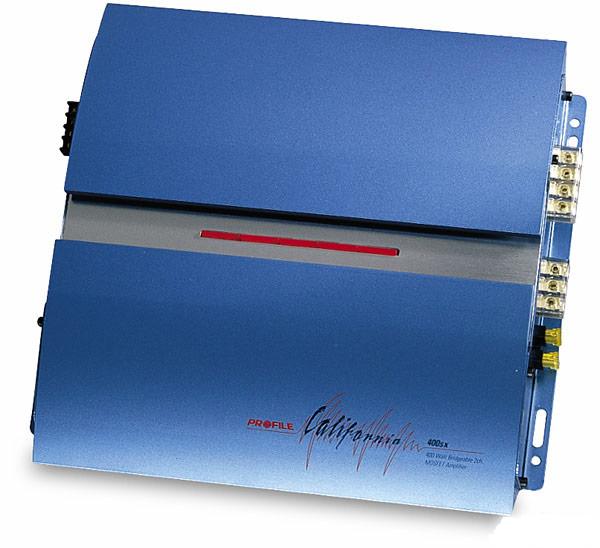|
All audio equipment is NOT created equally
I do not purport to be a car audio genius nor do I claim to be an expert of any kind. Any misleading information, incorrect information, so-far-out-there-as-to-not-be-believable information, or anything else falling under anything resembling these aforementioned catagories is entirely the responsibility of the site author. The site author is welcome to any and all suggestions and/or corrections that the reader feels need be addressed. Please remit all correspondence to:
Wemaster@ProwlerThe1st.freeservers.com
Thanks for visiting!
A bit of background........
Have you ever wondered why some brands of audio equipment's price tags contain almost obscene numbers while other brands have much, much lower prices and claim either comparable or higher quality? How is this possible, you ask? Well, to put not too fine a point on it, it's simply not. Marketing in all areas of life is a fiercely strong motivator for manufacturers and seemingly they are willing to claim almost anything, up to and including outright lies, to gain your business. In other words, they'll tell you almost anything that they think you want to hear if it will gain them your hard-earned money. Well, I'm by far no expert of any kind. My own personal experience has taught me some things, however, and if any of what I have learned over the years I have fooled with car audio as a hobby ends up helping you then this site has served its purpose.
RMS output vs. Peak output
Ok, guys and gals - here's where I either make a friend of you or you write me off as a complete lunatic and go elsewhere in your cyberspace cruising.
What I have learned over the years all boils down to one sentence: Peak power ratings are an irrelevant number.
Still here? Thanks for sticking with me even if for no other reason than to validate to yourself that I have, in fact, completely lost my mind.
Here's an example: Amplifier A claims in its advertising print to have an output of 280 watts total. The retail price for Amplifier A is 200.00
Amplifier B claims to have an output of 1200 watts total and is available for purchase at 99.00. Well, there's a no-brainer, right? We'll buy amp B and get way more output for less money! Ooo, what a deal!
Not so fast, my friends.
Amplifier A more than likely is a much higher quality amplifier much more capable of producing output wattage somewhere near what it claims. Amplifier B on the other hand, most likely wouldn't make even half of what it claims when put on a bench and tested with a 'numbers don't lie' voltage/wattage/ohms resistence tester. Why is it that audio manufacturers don't put RMS (root mean square) output in the ad? Because most likely sales would go down drastically for the lesser-quality products.
RMS output is the amount of wattage the amplifier will produce all the time whereas peak power output is the wattage produced during a musical peak, such as a strong cymbol crash, an explosion, or something else of that ilk. In my humble opinion, peak power is, more or less, an irrelavent number.
In my personal set-up in my car I have a CD/MP3 player, 3 amplifiers, 10 drivers (speakers), and the highest quality wiring that I could afford. Is it the best set-up in the world? No. Not by far it isn't. I don't make the kind of money or have the corporate sponsorship that the crank-it-up champions do. Does it sound worth the money that I have invested in it? Absolutely. And to illustrate the point I was attempting to make about RMS vs. Peak output.....one of the amplifiers in my car is a Kenwood KAC-646x. From the 1997 amplifier model year. It cost me about 220 bucks brand new including an extended warranty. The way I am running it (and most amps have more than one possible configuration for various uses - to be covered later) I am getting 140 watts RMS output from it.
"220 bucks for 140 watts? Is he crazy?" Well, you tell me. It suits the purpose I am using it for perfectly. I have had it for close to six (6) years now and have had absolutely no problems whatsoever from it. It still contains the original fuse that was factory-installed by Kenwood when it was built. You really do get what you pay for. My investment in a Kenwood product has paid off tenfold in my opinion. I have friends that will buy lesser-quality products that might last a year - possibly two if they are lucky. After that somethng will invariably go wrong. One channel will quit working. The inputs go bad. The entire unit quits functioning altogether. Where I spent almost six years ago - and still have and am using my Kenwood amp daily - their choices that they spent maybe 100 to 150 bucks lasted maybe a year and had to be replaced. Ok.....let's say that these lesser products last two years for arguments sake. Every 2 years they have to be replaced at the same cost (which is unlikely in and of itself - inflation is a killer). 6 years divided by replacement every other year = 300 to 450 dollars. My intial investment of 220 bucks, still kicking. Who got the better deal?
Sign my guestbook while you're here!
Any and all suggestions and/or corrections will be most appreciated. All correspondence regarding this site will be answered in as prompt a fashion as possible.
Send me an e-mail
|
This site is currently under constuction!
Please be patient while I complete the process of putting this thing together! More and more will be added and edited as time allows - please check back often for updates!
 Speaker Sensitivity
Have a good look at the spec sheet on an amplifier, speaker, or head unit prior to buying it. Almost all reputable audio equipment dealers will allow you to see the owner's manual and look at the specs prior to purchase. In my experience, dealers that require you to 'take their word for it' aren't worth their words. All audio equipment has both an RMS (continuous) and a peak wattage rating. This being output wattage for head units and amplifiers and input wattage capabilities for speakers. Your best results will be achieved when you match the RMS output of your component falls within the upper third of the RMS input range of your speaker(s). Something else to take into consideration is the sensitivity tating of the speaker. Given in a dB value, it will tell you how efficient that particular speaker is at reproducing music with the given input wattage. A higher value is better. For example, Speaker A: A 3-way coaxial 6"x9". Rated for 50 watts RMS and 175 peak with a sensitivity rating of 85dB. Speaker B: A competitor's product....also a 3-way coaxial 6"x9" rated for 50 watts RMS and 175 peak but with a sensitivity rating of 91dB. For this example we'll say you are using your head unit to power these 6"x9" speakers that will be mounted in the rear deck of your car. As you shop for speakers and come across these two different sets of speakers you notice that the B set of speakers cost more than the A set and you decide to buy the A set as the power capabilities are identical and why pay more money for the same thing, right? Well, the B set with it's higher sensitivity value will play louder and cleaner with the same 20 watt input from your head unit than the A set will. Quite possibly well worth the extra $$ for purchase. But it's up to you to listen and decide.
Site correspodence |




